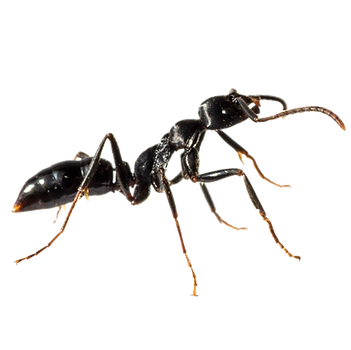.png)
Carpenter Ants Habitat
Carpenter ants are large ants, measuring between 0.25 to 1 inch (0.63 to 2.5 cm), and are found in various regions worldwide. They prefer nesting in dead, damp wood, though they do not consume it like termites. Instead, they hollow out sections of wood to create their nests. The Black Carpenter Ant (Camponotus pennsylvanicus) is the most common species infesting homes in the U.S., but there are over a thousand species within the Camponotus genus.
These ants thrive in moist, decaying, or hollow wood both indoors and outdoors. They create smooth tunnels, or "galleries," within the wood to move between sections of their nest. Areas like windows, roof eaves, porches, and decks are particularly susceptible to carpenter ant infestations, as they are more prone to moisture.
Pest Control
Carpenter ants can cause structural damage by hollowing out wood in buildings. They often leave behind frass, a sawdust-like material, near their nests, which can help identify their location. Their galleries are smooth and distinct from termite-damaged areas, which typically have mud-packed cavities.
Effective control involves identifying and targeting their nests, removing infested wood, and preventing further moisture buildup to protect vulnerable areas of your home.
